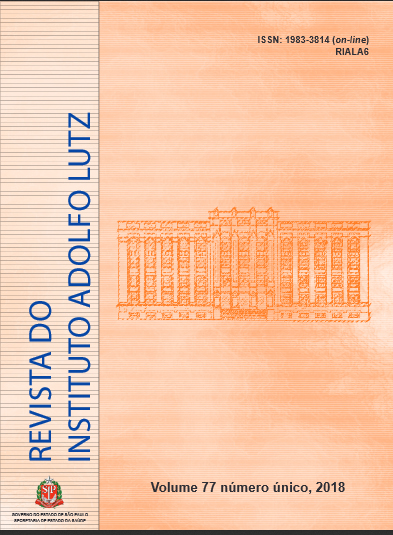Abstract
A thermodynamic paradigm for studying disease vector’s habitats & life cycles using NASA’s remote sensing data is being proposed. NASA’s current and planned satellite missions provide measurements of the critical environmental measures environmental state functions important to vector & disease life cycles such as precipitation, soil moisture, temperature, vapor pressure deficits, wet/dry edges, and solar radiation. Satellite data provide landscape scale process functions represented by land use/cover mapping and actual measurements of ecological functions/structure: canopy cover, species, phenology, and aquatic plant coverage. These measurements are taken in a spatial context and provide a time series of data to track changes in time. Global public health is entering a new informational age through the use of spatial models of disease vector/host ecologies driven by the use of remotely sensed data to measure environmental and structural factors critical in determining disease vector habitats, distributions, life cycles, and host interactions. The vector habitat microclimates can be quantified in terms of the surface energy budget measured by satellites. The epidemiological equations (processes) can be adapted and modified to explicitly incorporate environmental factors and interfaces required by a specific disease and its vector/host cycle. Remote sensing can be used to measure or evaluate or estimate both environment (state functions) and interface (process functions). It is critical that the products of remote sensing must be expressed in a way they can be integrated directly into the epidemiological equations.
References
1. Morens DM, Folkers GK, Fauci AS. The challenge of emerging and re-emerging infectious diseases. Nature. 2004;430(6996):242-9. Available in: https://www.nature.com/articles/nature02759
2. Rosenberg R. Threat from emerging vectorborne viruses. Emerg Infect Dis. 2016;22(5):910–1. http://dx.doi.org/10.3201/eid2205.160284
3. Coura JR. Chagas disease: what is known and what is needed--a background article. Mem Inst Oswaldo Cruz. 2007;102 Suppl 1:113–22. http://dx.doi.org/10.1590/S0074-02762007000900018
4. Luvall JC, Holbo HR. Thermal Remote Sensing Methods in Landscape Ecology. In: Turner MG, Gardner RH, editors. Quantitative Methods in Landscape Ecology. Series: Ecological Studies. Springer; 1991. p.127–52.
5. Quattrochi DA, Luvall JC. Thermal remote sensing in land surface processes. 1. ed. CRC Press; 2004.
6. Luvall JC, Quattrochi DA, Rickman DL, Estes Jr MG. Boundary layer (atmospheric) and air pollution: urban heat islands. In: Encyclopedia of Atmospheric Sciences. Amsterdam: Elsevier; 2015. p. 310–8. http://doi.org/10.1016/B978-0-12-382225-3.00442-4
7. Luvall JC, Holbo RH. Measurements of short-term thermal responses of coniferous forest canopies using thermal scanner data. Remote Sens Environ. 1989;27:1–10. Available in: http://citeseerx.ist.psu.edu/viewdoc/download?doi=10.1.1.468.8438&rep=rep1&type=pdf
8. Raso G, Vounatsou P, McManus DP, Utzinger J. Bayesian risk maps for Schistosoma mansoni and hookworm mono-infections in a setting where both parasites co-exist. Geospat Health. 2007;2(1):85–96. http://dx.doi.org/10.4081/gh.2007.257
9. Brooker S, Clements ACA, Bundy DAP. Global epidemiology, ecology and control of soil-transmitted helminth infections. Adv Parasitol. 2006;62:221–61. https://doi.org/10.1016/S0065-308X(05)62007-6
10. Bavia ME, Hale LF, Malone JB, Braud DH, Shane SM. Geographic information systems and the environmental risk of schistosomiasis in Bahia, Brazil. Am J Trop Med Hyg. 1999;60(4):566–72.
11. Nieto P, Malone JB, Bavia ME. Ecological niche modeling for visceral leishmaniasis in the state of Bahia, Brazil, using genetic algorithm for rule-set prediction and growing degree day-water budget analysis. Geospat Health. 2006;1(1):115-26. https://doi.org/10.4081/gh.2006.286
12. Ceccato P, Vancutsem C, Klaver R, Rowland J, Connor SJ. A vectorial capacity product to monitor changing malaria transmission potential in epidemic regions of Africa. J Trop Med. 2012;2012:595948. https://doi.org/10.1155/2012/595948
13. Yang GJ, Tanner M, Utzinger J, Malone JB, Bergquist R, Yy Chan E. Malaria surveillance-response strategies in different transmission zones of the People’s Republic of China: Preparing for climate change. Malar J. 2012;11:426. https://doi.org/10.1186/1475-2875-11-426
14. Guhl F. Chagas disease in Andean countries. Mem Inst Oswaldo Cruz. 2007;102 Supp l:29–37. http://dx.doi.org/10.1590/S0074-02762007005000099
15. Gaunt M, Miles M. The ecotopes and evolution of triatomine bugs (Triatominae) and their associated trypanosomes. Mem Inst Oswaldo Cruz. 2000;95(4):557–65. http://dx.doi.org/10.1590/S0074-02762000000400019
16. Malone JB. Biology-based mapping of vector-borne parasites by Geographic Information Systems and Remote Sensing. Parassitologia. 2005;47(1):27–50.
17. Dominguez A, Kleissl J, Luvall JC, Rickman DL. High-resolution urban thermal sharpener (HUTS). Remote Sens Environ. 2011;115(7):1772–8: http://dx.doi.org/10.1016/j.rse.2011.03.008
18. Government US. United States Environmental Protection Agency. Reducing Urban Heat Islands: Compendium of Strategies; 2016.
19. Christofferson RC, Mores CN. Potential for extrinsic incubation temperature to alter interplay between transmission potential and mortality ofdengue-infected Aedes aegypti. Environ Health Insights. 2016;10:119-23. http://dx.doi.org/10.4137/EHI.S38345
20. Morin CW, Comrie AC. Regional and seasonal response of a West Nile virus vector to climate change. Proc Natl Acad Sci. 2013;110(39):15629-5. http://dx.doi.org/10.1073/pnas.1307135110
21. Morin CW, Monaghan AJ, Hayden MH, Barrera R, Ernst K. Meteorologically driven simulations of dengue epidemics in San Juan, PR. PLoS Negl Trop Dis. 2015;9(8):e0004002. http://dx.doi.org/10.1371/journal.pntd.0004002
22. Lee CM, Cable ML, Hook SJ, Green RO, Ustin SL, Mandl DJ. An introduction to the NASA Hyperspectral InfraRed Imager (HyspIRI) mission and preparatory activities. Remote Sens Environ. 2015;167:6–19. http://dx.doi.org/10.1016/j.rse.2015.06.012

This work is licensed under a Creative Commons Attribution 4.0 International License.
Copyright (c) 2018 Jeffrey C Luvall
